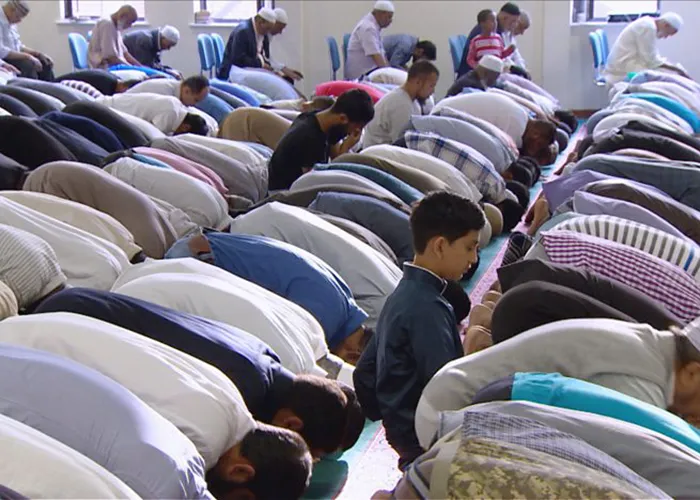Fatwa Panel of the Week – Volume02 Issue24
Prayer Times
Prayer is a sacred covenant between a person and their Lord, a daily pact renewed at specific times-moments of devotion defined by dawn’s light, the sun’s zenith, and its crimson sunset.
These times call the faithful to morning supplication, midday reflection, and evening serenity. The darkness of night draws the heart toward intimate prayer, culminating in Maghrib and Isha prayers.
“Indeed, prayer has been decreed upon the believers a decree of specified times.”
— Surah An-Nisa (4:103)
Why Is Performing Prayer on Time Important?
- Obedience to Divine Command: God has set specific times for worship. Observing them is a sign of reverence, discipline, and servitude.
- Spiritual Impact: The soul is more receptive at set times. The heart is spiritually prepared to connect with the Creator.
- Prophetic Tradition: The Prophet (PBUH) and his household (Ahlul Bayt) always prayed at the earliest time.
The Holy Prophet said: “The best of deeds before God is prayer at its prescribed time.”
Daily Prayer Times According to Grand Jurists:
(Ayatollah Khamenei, Ayatollah Sistani, Ayatollah Makarem Shirazi)
| Topic | Ayatollah Khamenei | Ayatollah Sistani | Ayatollah Makarem Shirazi |
| Fajr (Morning Prayer) | “From the time of true dawn (fajr ṣādiq) until sunrise,1 there is no difference between moonlit and non-moonlit nights when it comes to the occurrence of dawn. However, it is better on moonlit nights to wait until the light of morning clearly overcomes the brightness of the moon.” |
“From the time of second dawn until sunrise. | “From the beginning of true dawn (fajr ṣādiq) until sunrise, the criterion is the appearance of the twilight light on the horizon, and in this regard, there is no difference between moonlit and non-moonlit nights— even if this light may not be clearly visible on moonlit nights. Nevertheless, it is recommended to perform the morning prayer (ṣalāt al-fajr) in the early morning darkness, before the sky becomes bright.” |
| Dhuhr (Noon Prayer)
|
Starts When the sun begins to decline from its zenith (Zawal)
And Ends When enough time remains to perform Asr before sunset |
From the time of legal noon (ẓuhr al-sharʿī, i.e., solar zenith) until the point at which only enough time remains in the day to perform the ʿAṣr prayer, there is a discussion and difference of opinion regarding whether the end of the day refers to sunset (ghurūb al-shams) or to the time of maghrib (complete disappearance of twilight). Therefore, it is appropriate to exercise caution in this matter.” |
Same as Ayatullah Khamenei’s fatwa |
| Asr (Afternoon Prayer)
|
“From the time that enough has passed after the beginning of Dhuhr (legal noon) to perform the ẓuhr prayer, until sunset.” | “From the time that enough has passed after the beginning of zawāl (legal noon) to perform the ẓuhr prayer, until the end of the day.” 2 | Same as Ayatullah Khamenei’s fatwa |
Notes:
- “When the night comes to an end, a white light first appears in the eastern direction. This vertical light, which is separate from the horizon, is called the first dawn or false dawn, meaning that morning has not yet arrived. However, gradually this whiteness begins to spread and disperses across the eastern horizon. This widespread light is called the second dawn or true dawn, meaning that morning has begun and it is permissible to perform the morning prayer (ṣalāt al-fajr) at that time.”
- “Therefore, for someone who knows the time of sunset, it is an obligatory precaution not to delay the ẓuhr and ʿaṣr prayers until the sun sets. If they are delayed, the prayers should be performed during the time between sunset and maghrib without the intention of them being either ‘performed on time’ (ʿadāʾ) or ‘make-up’ (qaḍāʾ).”
| Topic | Ayatollah Khamenei | Ayatollah Sistani | Ayatollah Makarem Shirazi |
| Maghrib (Sunset Prayer) | “From the time when the eastern redness (ḥumrah al-mashriqiyyah)—the red glow that appears in the sky after sunset rising from the east—disappears, until the point when only enough time remains to perform the ʿishāʾ prayer before midnight.” | “According to obligatory precaution, the time for Maghrib begins only after the disappearance of the eastern redness (ḥumrah al-mashriqiyyah). Therefore, if a person knows the exact time of sunset, they must—according to obligatory precaution—not perform the Maghrib prayer at sunset and before the eastern redness has disappeared. However, if one is uncertain about the exact time of sunset for any reason, they are certainly not permitted to perform the Maghrib prayer before the eastern redness has passed overhead and disappeared.” |
“When the disc of the sun disappears below the horizon, until the point when only enough time remains to perform the ʿishāʾ prayer before midnight. As a precaution, one should wait until the eastern redness (ḥumrah al-mashriqiyyah) passes overhead and moves toward the west.” |
| Isha (Night Prayer) | “From the time that enough has passed after the beginning of Maghrib to perform the Maghrib prayer, until midnight.” | Same as Ayatullah Khamenei’s fatwa | “From the time that enough has passed after the sun’s disc has set below the horizon to perform the Maghrib prayer, until midnight.” |
Specific and Shared Times of Prayer
The Dhuhr and ʿaṣr prayers, as well as the maghrib and ʿishāʾ prayers, each have specific times and shared times.
The specific time for Dhuhr is the period during which ʿaṣr cannot be performed, and vice versa. Likewise, the specific time for maghrib is when ʿishāʾ cannot be performed, and vice versa.
Between the specific times of Dhuhr and ʿaṣr lies the shared time for both prayers, and between the specific times of maghrib and ʿishāʾ lies the shared time for those two prayers. During the shared time, both prayers may be offered—provided that the proper order is observed: Dhuhr must precede ʿaṣr, and maghrib must precede ʿishāʾ. (This is a point of consensus.)
| Topic | Ayatollah Khamenei | Ayatollah Sistani | Ayatollah Makarem Shirazi |
| The specific time for the Dhuhr prayer | “It begins from the start of legal noon (Dhuhr al-sharʿī) and lasts until enough time has passed to perform the ẓuhr prayer.” | Same as Ayatullah Khamenei’s fatwa | ” Same as Ayatullah Khamenei’s fatwa |
| The specific time for Asr prayer | Starts after performing Dhuhr Prayer Until only enough time remains before sunset to perform one ʿaṣr prayer.” | Starts after performing Dhuhr Prayer Until only enough time remains before the end of the day to perform one ʿaṣr prayer.” | Same as Ayatullah Khamenei’s fatwa.
“Therefore, if someone has not performed the ẓuhr prayer by that time, they have missed both the specific and shared time for ẓuhr, and must first perform the ʿaṣr prayer.” |
| The specific time for Maghrib Prayer
|
“From the time the eastern redness in the sky disappears until enough time has passed to perform the Maghrib prayer.” | “According to obligatory precaution, it begins from the time the eastern redness in the sky disappears and lasts until enough time has passed to perform the Maghrib prayer.” | “From the moment the disc of the sun disappears below the horizon, until enough time has passed to perform the Maghrib prayer.” |
| The specific time for Isha Prayer
|
“From the time when only enough time remains before midnight to perform the ʿIshāʾ prayer.” | Same as Ayatullah Khamenei’s fatwa. | Same as Ayatullah Khamenei’s fatwa. |
“To determine the time for the ẓuhr prayer, one can use a shadow method. A straight stick or rod is placed vertically on a flat surface. From sunrise, the shadow of the rod falls toward the west and gradually shortens as the sun rises higher. When the shadow reaches its shortest length, that moment marks the legal noon (zawāl) or solar zenith. As soon as the shadow begins to lengthen again and shifts toward the east, the time for the ẓuhr prayer begins. (Consensus among scholars)”
How to Calculate the Islamic (Sharʿī) Midnight
Islamic midnight (midnight by sharīʿah standards) is not the same as 12:00 AM on the clock. Instead, it is calculated as follows:
| Topic | Ayatollah Khamenei | Ayatollah Sistani | Ayatollah Makarem Shirazi |
| Islamic midnight to determine the time for Maghrib and ʿIshāʾ prayers” | “It is half the interval between sunset and true dawn (fajr ṣādiq).”
|
“According to obligatory precaution, caution should be observed in calculating midnight between the following two times: (a) Half the interval between sunset and true dawn (fajr ṣādiq). (b) Half the interval between the disappearance of the eastern redness (ḥumrah al-mashriqiyyah) and true dawn (fajr ṣādiq).” 3 |
“According to obligatory precaution, half of the time between sunset and the time of the morning prayer (fajr) should be calculated.” |
Note: 3. “For example, if sunset in a city is at 6:00 PM, the disappearance of the eastern redness is at 6:20 PM, and true dawn (fajr) is at 4:00 AM, then—considering the aforementioned precaution—one should exercise caution regarding whether midnight falls at 11:00 PM or 11:10 PM.”
editor's pick
news via inbox
Subscribe to the newsletter.




